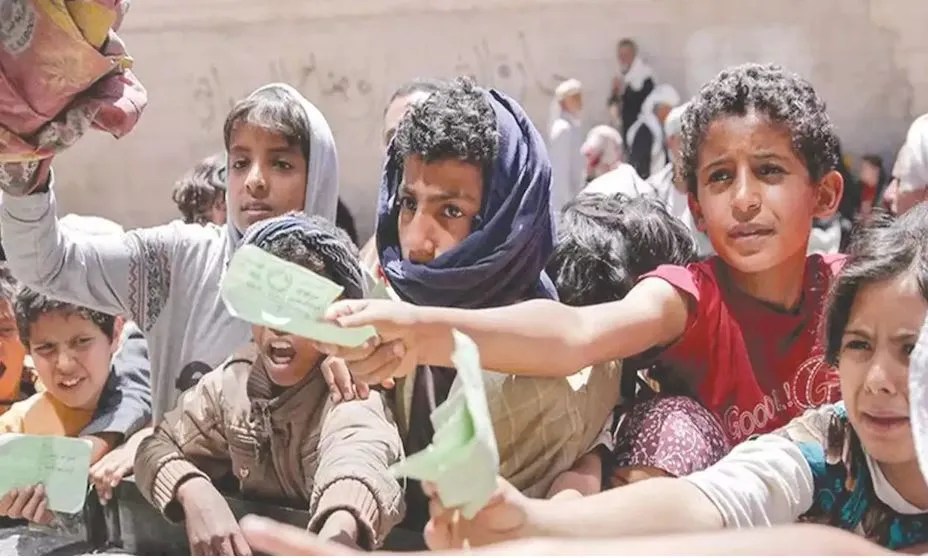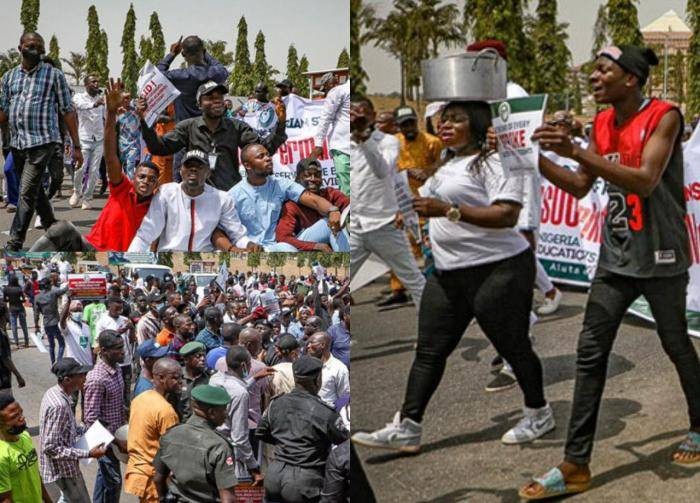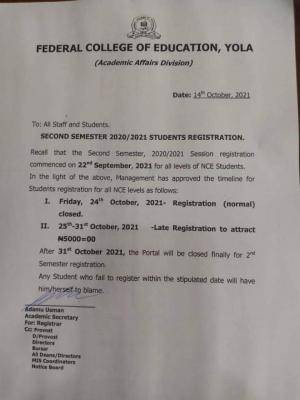
Low-income economies are classified as poor by the World Bank’s four-tiered assessment system. These countries are mainly dominated by African countries. Which countries are ranked among the poorest in the world and what makes a country poor and some others rich? You would get the details in this article
The ranking of the world’s poorest countries is based on the Gross National Income (GNI) per capita for each nation, which is calculated using the country’s population divided by the total income. The Gross National Income (GNI) is quite similar to the Gross Domestic Product (GDP) per capita.
In economics, both GDP and GNI measure the monetary value of products and services produced in a country at a specified period, whereas the Gross National Product (GNP) additionally accounts for income from foreign sources (such as foreign investments or real estate holdings).
As a result, GNP is considered to be a marginally more reliable indicator of a nation’s economic prosperity than GDP. Surprisingly, some of the richest countries in Africa are listed amongst the poorest in the world. More so, you will equally find some of the poorest countries in Africa still on this list. Some countries here which might seem shocking to you, please note that the ranking is determined by the GNI.
Here are the Top 30 Poorest Countries in the World:
1) LESOTHO ($1370 GNI)
Lesotho is a landlocked country that covers a little more than 30,000 km2 (11,583 sq mi), and has a population of nearly 200,000. The term “Lesotho” approximately translates as “the territory of the Sesotho people.”
A little more than 40% of people are estimated to be living below the $1.25 per day international poverty threshold.
2) COLOMBIA ($6160 GNI)
Colombia is a long-standing middle power, with the fourth largest economy in Latin America and a significant poverty impact. It has a rich cultural past as a result of the interaction between descendants of the original native people, Spanish colonists, and Africans imported as slaves.
34 percent of the population is considered to be below the poverty line. More than three out of 10 Colombians still live in substandard conditions, despite the country having one of the fastest growing economies in the world. Colombia is also the seventh-most unequal nation in the world.
3) SOUTH AFRICA ($6440 GNI)
The Republic of South Africa is a country in southern Africa with a coastline of 2,798 kilometers (1,739 miles) on the Atlantic and Indian Oceans. Namibia, Botswana, and Zimbabwe are to the north; Mozambique and Swaziland are to the east.
There is a huge margin between the rich and the poor in South Africa. Inequality has gotten worse since 1994 and is still very severe. Very high levels of chronic poverty, a small number of high-earners, and a small middle class are signs of high levels of income polarization.
4) ERITREA ($581 GNI)
Eritrea is a country in the Horn of Africa. Sudan borders it on the west, Ethiopia on the south, and Djibouti on the southeast, the country’s east and northeast feature huge coastlines on the Red Sea, just across from Saudi Arabia and Yemen.
Eritrea faced many difficulties, including continuous war, famines, and droughts. As a result, poverty has spread like wildfire in a nation where over 66% of citizens are below the poverty line.
5) MADAGASCAR ($500 GNI)
Madagascar, an island nation off the coast of southern Africa, has the fourth-highest rate of chronic malnutrition in the world, with 40% of children under the age of five experiencing stunting.
Madagascar has one of the worst rates of poverty in the world while having abundant natural resources. Two-thirds of the population live on less than US$1.25 a day, the standard rate for the international poverty level.
6) BENIN ($1370 GNI)
Benin, a West African country of approximately 11.2 million inhabitants, is one of only 25 in the world with a GNP per capita of less than $2,100. Approximately half of the population lives on less than $1.90 per day, and more than three-quarters survive on $3.20 or less.
The country’s life expectancy at birth is only 61 years old, around 11 years less than the global average. A high newborn mortality rate contributes to poor life expectancy. As sad as it might be, for every 1000 live births, Benin records 98 infant deaths annually, as against 39 internationally.
7) GUINEA ($1,010 GNI)
Despite an abundance of valuable minerals such as diamonds, gold, and aluminum ore, Guinea is one of the world’s poorest countries. Only around a third of the population has access to power, and the country’s literacy rate of 32% is among the lowest in the world.
Guinea, like many other countries on this list, has a history of political instability, which has impeded economic growth and development.
8) ZIMBABWE ($1,400 GNI)
Less than 40 years have passed since Zimbabwe, a former British colony, gained independence. It is one of the 23 countries with a per capita GDP of less than $2,000 and only 38.1 percent of inhabitants have access to power.
Zimbabwe spends the equivalent of 7.5 percent of its GDP on education, which is significantly higher than the 4.8 percent average across all countries with data.
9) MALI ($870 GNI)
Mali’s population is fast expanding, as it is in many of the world’s poorest countries. Except for a few countries, the West African country’s annual population growth rate of 3.0 percent is the fastest in the world. Only 35.1 percent of Mali’s population has access to electricity.
Mali is one of the most impoverished nations in the world, with about 45% of its people living below the poverty level.
10) RWANDA ($850 GNI)
Rwanda is an east-central African landlocked republic. One of the deadliest genocides in history has impeded its economic progress. Despite making a recovery in recent years through coffee and tea production, the country remains one of the poorest in the world, with a GNP per capita of just $1,814.
Almost 80% of Rwandans live on less than $3.20 per day, and more than half survive on less than $1.90.
11) CHAD ($650 GNI)
Despite a plethora of valuable resources such as gold and oil, Chad is one of the world’s poorest countries. Tensions between Muslims in the north and Christians in the south have stifled their economic progress. Corruption in government is also harming economic development and inhibiting investment.
Based on several surveys on perceived corruption in the government sector, Chad has been ranked among the most corrupt countries by Transparency International.
12) ETHIOPIA ($960 GNI)
Ethiopia is Africa’s oldest independent nation, and because it was never colonized, it has not suffered the hardships that many other countries on this list have. However, droughts and civil unrest in the early 1990s hampered the country’s progress. Additionally, one in every four Ethiopians lives on less than $1.90 per day, and 62% live on $3.20 or less per day.
13) HAITI ($1420 GNI)
Haiti is a country located on the Caribbean island of Hispaniola. Despite gaining independence from France in the nineteenth century, the country remained in debt to its previous colonial master until 1947.
Natural calamities such as hurricanes and earthquakes have wreaked havoc on the country in recent decades. The effects of poverty on the Haitian people are obvious since approximately 46 percent of the population is malnourished, and the country’s average life expectancy is only 63.6 years.
14) UGANDA ($840 GNI)
Uganda gained independence from the United Kingdom in 1962, but was ruled by Idi Amin from 1971 to 1979. During that time, the country’s economy nearly collapsed as a result of Amin’s expulsion of all Asians.
A further estimate states that Amin’s rule resulted in the deaths of 300,000 Ugandans. A military takeover and rebellions led by the Lord’s Resistance Army have recently roiled the landlocked African nation.
15) AFGHANISTAN ($500 GNI)
In recent decades, substantial economic progress in Afghanistan has been essentially impossible due to constant fighting. When the Soviets invaded in 1979, the ensuing conflict lasted a decade and killed over a million people. Ever since then, the American Army has been present there.
Even though NATO’s combat mission in Afghanistan finished in 2014, insurgent groups continue to pose a danger to the stability of the nation. The landlocked nation of South and Central Asia currently has one of the most corrupt governments in the entire globe.
16) BURKINA FASO ($860 GNI)
Burkina Faso is a landlocked West African country with considerable gold deposits but is one of the poorest in the world. Since obtaining independence from France nearly 60 years ago, the country has experienced recurrent political upheaval and warfare, making substantial progress all but impossible.
Currently, more than three-quarters of the population live on less than $3.20 each day. Several societal and infrastructure barriers are currently impeding economic development.
17) TOGO ($980 GNI)
Togo has experienced spells of political instability since achieving independence from France in 1960 but has recently stabilized. Togo’s economy grew at a quicker rate of 4.4 percent in 2017 than the global average of 3.2 percent.
Nonetheless, the country remains one of the poorest in the world today. Slums house over half of the urban population, while nearly half of Togo’s total population lives on less than $1.90 per day. The country’s life expectancy is only 60.5 years, which is roughly 12 years lower than the global average.
18) GUINEA-BISSAU ($780 GNI)
One of the most corrupt nations in the world is Guinea-Bissau, which is located in West Africa. The legal sector of the country’s economy is predominantly agricultural, accounting for more than two-thirds of total employment.
The most significant export of the nation in 2017 was cashews, which made up about 80% of its total export value. Guinea-Bissau is one of a few countries in the world where the average life expectancy at birth is less than 60 years.
19) SOLOMON ISLANDS ($2300 GNI)
Only a handful of the countries on this list are not in Africa, including the island nation of the Solomon Islands in the South Pacific. In the late 1990s and early 2000s, civil upheaval brought the country to the verge of collapse.
The Solomon Islands, like many other impoverished countries, have fewer than half their population without access to electricity. Life expectancy is 73.26 years.
20) THE GAMBIA ($800 GNI)
The Gambia is socially and politically stable in comparison to most countries on this list and most countries in West Africa. Nonetheless, with a GNP per capita of less than $1,500, it is one of the world’s poorest countries.
The Gambia has minimal natural resources and is mainly reliant on agriculture, with timber, Brazil nuts, and cashews accounting for 80% of exports in 2017. The Gambia has a life expectancy rate of 62.92 years.
21) SIERRA LEONE ($510 GNI)
Sierra Leone is a West African country that is rich in natural resources. It went through a horrific civil war spurred by the trafficking in diamonds and precious minerals.
Though the conflict ended in 2002, much of the country’s institutions were decimated, and the consequences are still being felt. Sierra Leone’s public sector is now seen to be more corrupt than that of the majority of other countries.
The consequences of a lack of economic progress are obvious. With 1,360 deaths per 100,000 live births, Sierra Leone has the highest maternal mortality rate in the world, and a fifth of the population is malnourished.
The country was also one of the most hit by the 2014 Ebola outbreak, and the average life expectancy at birth in Sierra Leone is the lowest in the world, at 52.2 years.
22) MOZAMBIQUE ($480 GNI)
Mozambique, a former Portuguese territory in southern Africa, gained independence in 1975. Mozambique, like many former colonial countries, struggled in its early years of independence, suffering through a civil conflict that lasted from 1976 to 1992.
Though the discovery of natural gas in 2011 boosted the country’s economy, progress is still sluggish due to the impact of a decade-and-a-half of civil war. A shocking 62.4 percent of the population lives on less than $1.90 per day, and over 82 percent live on less than $320 per day. The average lifespan in Mozambique is just 60 years.
23) LIBERIA ($620 GNI)
Liberia’s economy was ravaged in the 1990s and early 2000s by a civil conflict that killed a quarter of a million people and displaced thousands more. The country’s limited economic progress has resulted in a low standard of living.
Approximately 20% of the population lacks access to power, and approximately 39% are malnourished. The government, which is among the most corrupt in the world, spends a small percentage of GDP on education, and illiteracy is rampant.
24) MALAWI ($630 GNI)
Malawi, an East African country bordered by Mozambique, is one of the world’s poorest countries; 70.3 percent of the population lives on less than $1.90 per day.
Agriculture and subsistence farming are often largely dependent on poorer countries’ economies.
Malawi, like the rest of the area, is battling to keep HIV at bay. Approximately one in every ten residents between the ages of 15 and 49 is currently HIV positive. According to the BBC, the sickness has orphaned over a million children in the country.
25) NIGER ($590 GNI)
Niger is one of the four countries in the world with a per capita GDP of less than $1,000. The country has experienced coups and political instability since achieving independence from France in 1960.
Niger has one of the highest birth rates and population growth rates in the world, as well as one of the worst death rates in Africa. Men have a life expectancy of roughly 58 years while women have a life expectancy of about 61 years. Niger’s population is quite young: almost one-half is under the age of 15, and roughly one-fourth is between the ages of 15 and 29.
The country’s overall health is low, and healthcare facilities are limited, particularly in rural areas. The infant mortality rate, which is approximately 125 per 1,000 live births, is among the highest in Western Africa.
As one of the world’s least developed countries, only 16% of the population has access to electricity. Poverty is rampant in the country, with more than three out of every four people living on less than $3.20 per day.
26) THE DEMOCRATIC REPUBLIC OF CONGO ($580 GNI)
The Democratic Republic of Congo is endowed with important minerals such as copper, diamonds, and gold. Rather than being a boost to the economy, possession of these resources has fueled a civil war that has resulted in up to 6 million deaths.
The country’s basic infrastructure is deficient, with only roughly 17 percent of the population having access to power. This, combined with widespread public sector corruption, makes doing business in the country tough.
The Democratic Republic of the Congo ranks 164 out of 174 nations on the 2020 Human Capital Index, reflecting decades of conflict and fragility that have hampered growth. The DRC Human Capital Index is 0.37, which is lower than the SSA average of 0.4.
This indicates that a Congolese child born today may expect to accomplish only 37% of their potential, compared to what would have been achievable if they had had a comprehensive, high-quality education and ideal health care.
27) BURUNDI ($240 GNI)
Burundi is reportedly the poorest country in Africa and the world, with a GNP per capita of $686. A devastating 12-year civil conflict that began in 1994 due to ethnic tensions between the Tutsi minority and the Hutu majority marred the country’s modern history.
More than 87 percent of the population lives in rural areas, and less than 10 percent of the population has access to electricity. Although nearly all pregnant women in the country receive prenatal medical treatment, the country has one of the highest maternal mortality rates in the world, with 712 deaths per 100,000 live births.
28) THE CENTRAL AFRICAN REPUBLIC ($530 GNI)
The GNP per person in the Central African Republic is the lowest in the entire world at $663. Despite abundant natural resources such as gold, diamonds, and oil, violence has hampered economic progress since the country’s independence from France in 1960.
The Central African Republic is the only country with data that shows that more than half of all citizens—61.8%—are malnourished. In addition, the country has the world’s third-highest newborn mortality rate, and one of the lowest average life expectancies, at 52.9 years.
29) SOMALIA ($450 GNI)
Somalia is a country in Africa with a population growth of 16 million people. It is one of the world’s poorest countries, with a poverty rate of 73 percent and a life expectancy of 55 percent. The dissolution of the Somali Democratic Republic in 1991, which caused division in the nation, is largely to blame for this.
Somalia is currently in a crisis as a result of many years of armed strife, a severe drought, and hunger. The Conflict has forced hundreds of thousands of Somalis to flee. In many regions of the country, high rates of malnutrition are a result of ongoing food shortages.
The infant mortality rate in the nation is among the highest in the world. The average life expectancy in Somalia is 50 years, which is significantly less than that of its neighbors.
30) SOUTH SUDAN ($1090 GNI)
One of the world’s poorest and least developed nations is South Sudan, with a population of roughly 12 million. The South Sudanese economy was severely damaged by the civil conflict, which broke out in late 2013.
80 percent of the population, or the vast majority, lives in rural areas and the life expectancy is 58.48 years. It’s quite sad that in spite of the country’s richness in natural resources, poverty and food insecurity remain widespread in South Sudan.
The World Bank’s most recent estimates show that 82 percent of South Sudanese people live in abject poverty and make less than $1.90 per day.
Poverty is a national issue rather than an individual affair. According to statistics, a greater percentage of the population in these countries live below the international poverty line, with no access to a good healthcare system, education, piped water, and other vital amenities.
At present, the elimination of poverty should be the priority of the governments of the aforementioned countries, in order to raise the country’s Gross Domestic Product (GDP), which measures the economic wellbeing of every nation.




